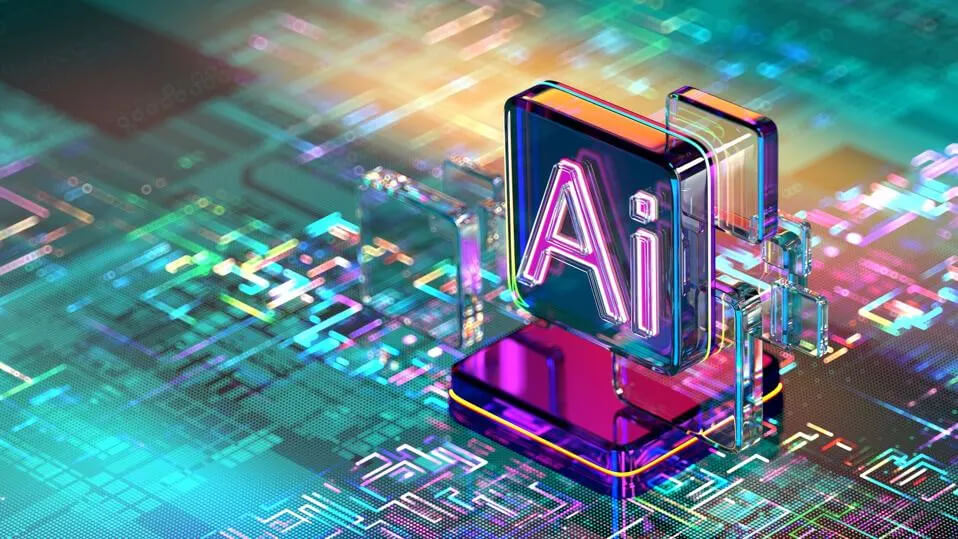Framework For Upskilling And Reskilling The Workforce In The Age Of AI

Aug 11, 2025
Last updated on Aug 11, 2025
The average half-life of skills is now less than five years. In some tech fields, it's just two and a half years. As AI automates more tasks—from basic data analysis to complex research and coding—your workforce faces a major challenge. The skills that made your employees valuable yesterday may become useless tomorrow. But this disruption also creates a huge opportunity. Companies that master upskilling and reskilling the workforce will build unbeatable competitive advantages while others struggle to keep up.

Key takeaways
- Upskilling and reskilling the workforce must become core business strategies, not just HR programs, to build competitive advantage through unique internal talent
- Leadership accountability across all levels is essential, with skills development built into performance goals and change management processes
- Employee engagement requires clear communication, reduced barriers, and obvious career paths, while external partnerships multiply resources and access to innovation
The numbers are stark. The OECD predicts that within 15 to 20 years, automation will eliminate 14% of global jobs and completely change another 32%. This affects over one billion workers worldwide. This shift demands a new approach to talent development that goes beyond traditional training. Leaders must embrace comprehensive reskilling and upskilling for a future-ready workforce that ensures business growth and survival in an AI-driven economy.
The core skills for the AI era
As AI’s presence in the workplace continues to expand, it handles routine tasks well while increasing demand for distinctly human abilities that work alongside technology.
Technical foundations include:
- AI and machine learning literacy – Basic understanding for all employees, regardless of role or department
- Data analytics capabilities – Relying on facts, analytics, and machine-generated insights—not just gut instinct—leads to better accuracy, outcomes, and risk mitigation, especially as AI augments executive choices.
- Cybersecurity knowledge – Essential protection skills as digital systems expand across organizations
- Cloud computing proficiency – Expertise in major platforms that form the backbone of modern business operations
Human-centric capabilities represent the greatest value opportunity:
- Complex problem-solving – Creative approaches to challenges that AI cannot address independently
- Emotional intelligence – Understanding and managing human emotions in AI-enhanced work environments
- Leadership and communication – Skills to collaborate effectively with both AI systems and diverse human teams
- Strategic thinking – Judgment and empathy required for roles demanding human insight
- Creativity & innovation – AI excels at optimization but only humans generate breakthrough ideas, design new products, or solve problems creatively—this is how organizations outpace competitors.
These human skills form the foundation for jobs requiring areas where developing AI workforce development mindset proves critical for long-term success.
The greatest competitive advantage lies not in technical skills alone, but in developing capabilities that complement AI rather than compete with it.
Framework for workforce transformation in the age of AI
Successful workforce transformation follows five interconnected principles. Each principle addresses specific challenges while building toward comprehensive organizational capability through strategic reskilling & upskilling in the age of AI.
Principle 1: Make skills development a core strategic priority
Skills development must become a main driver of competitive advantage, not just a reaction to change. Smart companies know that building internal capabilities creates unique talent pools that competitors cannot access while filling critical skill gaps faster than hiring from outside.
This principle changes how organizations think about talent investment. Instead of seeing training as a cost, leaders use reskilling in the age of AI as strategic tools that enable quick adaptation to market changes. Leading IT services companies have successfully reskilled thousands of cybersecurity professionals across different skill levels. Similarly, Machine Learning Universities within major corporations have transformed employees into AI experts, regardless of their starting technical background.
Organizations increasingly recognize the value of understanding future workforce skills to guide their strategic planning efforts effectively.
Implementation requires three key shifts:
- Performance metrics should measure how well programs fill critical capability gaps and support strategic goals
- Use reskilling to access diverse candidate pools who might not traditionally qualify for certain roles but have strong basic abilities and learning potential
- Make skills development a core part of your employee value proposition to enhance attraction and retention
Research shows that only 24% of companies effectively connect corporate strategy with reskilling efforts, mainly because responsibility stays isolated in HR departments. Companies achieving breakthrough results build skills development into executive performance goals and quarterly business reviews.
Multi-year transformation strategies demonstrate this approach in action. Organizations have successfully upskilled employees in AI and automation by making it a high-priority initiative tracked through executive objectives and key results. Retail chains have made training and reskilling an integral part of business strategies, with each business leader responsible for designing and delivering workforce-reskilling plans.
Implementation means adding talent development metrics to management performance reviews. Business leaders must own workforce development plans for their areas, with their ability to execute these plans factored into promotion decisions. This approach addresses common problems like “talent hoarding,” where managers resist employee participation in development programs due to short-term operational concerns.
The transformation requires leaders to understand what AI-reimagined leadership means for driving organizational change and employee development initiatives.
Principle 3: Execute skills development as an organizational change program
Most training programs fail because they treat skills development as isolated events rather than comprehensive organizational transformation. True change requires shifting processes, mindsets, and support systems so that new skills become immediately applicable and culturally embedded through strategic use of AI in training and development.
1. Foundation: Smart skills mapping
Rather than building skills frameworks from scratch, leading companies adopt external taxonomies from organizations like the World Economic Forum or specialized data providers, then customize them for specific business needs. Financial institutions have adopted global taxonomy frameworks and customized them slightly for business-specific skills. Technology companies have moved from maintaining in-house taxonomies of thousands of skills to working with continually updated external databases.
2. Integration: Learning in the flow of work
Since 68% of workers prefer on-the-job development over formal classroom settings, the most effective programs integrate learning into daily work. Banking institutions exemplify this through four-month hands-on programs combining simulation-style training with eight-month field deployments involving structured internships and manager shadowing.
3. Support: Systematic integration assistance
Comprehensive mentoring programs, including buddy systems connecting program graduates with current participants, demonstrate how systematic support drives long-term success. Organizations provide career coaching for employees making particularly difficult transitions, such as from operational roles to technical development positions.

Principle 4: Design programs that employees actually want to join
Despite common assumptions about employee resistance, 68% of workers express willingness to reskill when benefits are clear and barriers are low. The challenge lies in creating compelling value propositions that treat employees as customers of development programs.
- Transparency builds trust and participation. Leading companies openly discuss why programs exist, what opportunities they create, and how they align with both organizational needs and individual career goals. Automotive manufacturers have successfully enrolled diesel engineers in transition programs by honestly explaining industry changes while positioning reskilling as job security insurance for the future.
- Risk reduction proves critical for participation. Career choice programs that remove financial barriers by covering all educational costs upfront have contributed to participants across various industries. Mission-driven programs provide tuition coverage plus paid learning time up to two days weekly for entire academic years, recognizing that meaningful skill development requires substantial time investment.
- Dedicated learning time ensures program effectiveness. Organizations dedicate quarterly days exclusively for employee development. Energy companies have worked closely with frontline managers to provide paid training hours for thousands of hourly workers during digital transformation, demonstrating that successful reskilling requires organizational commitment to protect learning time from operational pressures.
Principle 5: Leverage an ecosystem of skills partners
No single organization possesses the resources, expertise, or scale needed for comprehensive workforce transformation. Strategic partnerships multiply capabilities while providing access to innovation, diverse talent pools, and shared infrastructure that individual companies cannot achieve alone.
- Industry partnerships create shared infrastructure and reduce individual company costs while building broader talent pipelines. Technology immersion programs in financial sectors bring together major banks, insurance companies, and asset managers to develop industry-wide technology capabilities. Automotive skills alliances coordinate reskilling efforts across entire sectors, demonstrating how collective action accelerates individual company success.
- Nonprofit partnerships expand access to diverse talent pools while advancing broader societal goals. Career advancement organizations stand out with statistical validation of their impact, placing young people in corporate roles with an 80% placement rate across hundreds of participating companies. Professional development nonprofits connect companies with underrepresented populations who can be developed into valuable contributors.
- Educational institution collaboration ensures programs remain current with rapidly evolving skill requirements. Institutes of technology bring together colleges and major employers to provide practical technical training, enabling quick adaptation to new technologies. Automotive manufacturers collaborate with employment agencies and industry associations to support electric vehicle transition through targeted reskilling programs for industrial electricians.
The AI revolution demands strategic workforce transformation, not scattered training initiatives. Success requires treating upskilling and reskilling the workforce as a core business priority with distributed leadership accountability and comprehensive change management. Organizations must design employee-focused programs that reduce barriers while leveraging partnerships to multiply resources and innovation access. The companies that master this framework will build resilient, competitive workforces capable of thriving in an AI-driven future.
For organizations ready to implement these strategies, expert HR consulting services provide the specialized guidance needed to navigate this critical transformation. Join Vietnam’s leading experts and business leaders at The Makeover 2025 to discover actionable frameworks for building the workforce of tomorrow.

Solve your HR problems!
6th Floor, Star Building, 33 Mac Dinh Chi, Saigon Ward, Ho Chi Minh city, Vietnam




